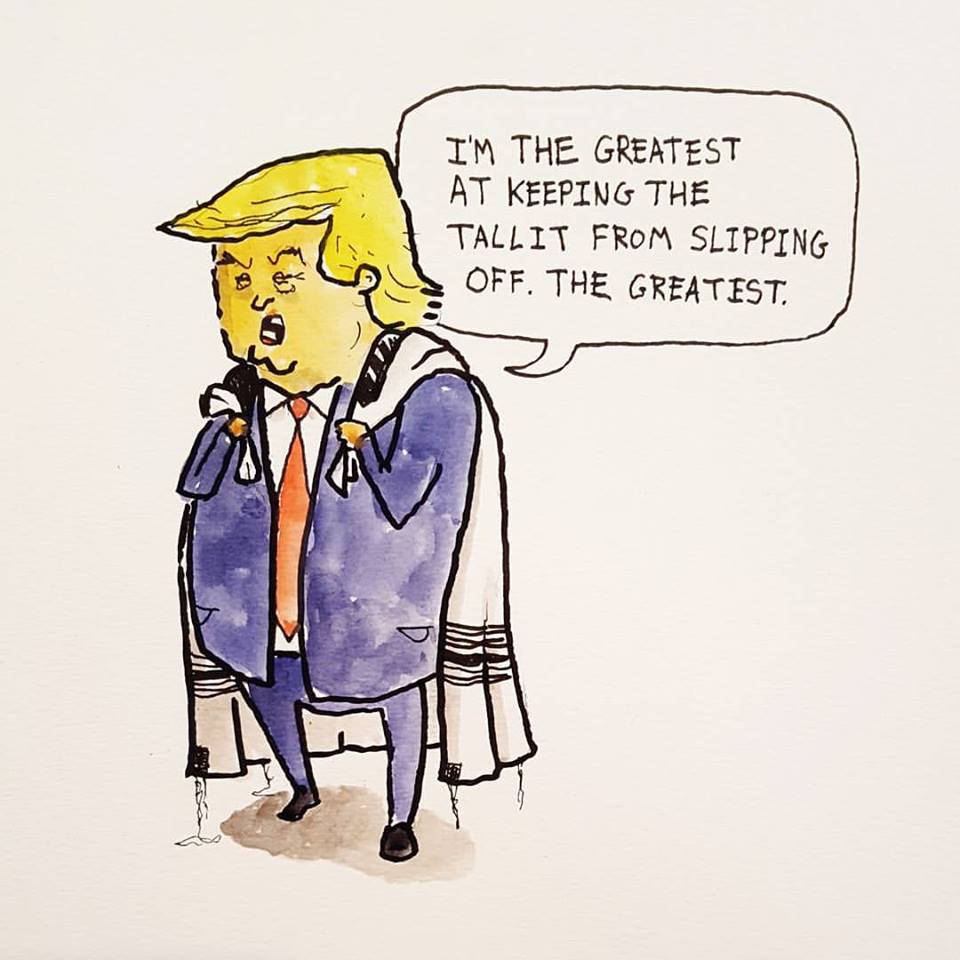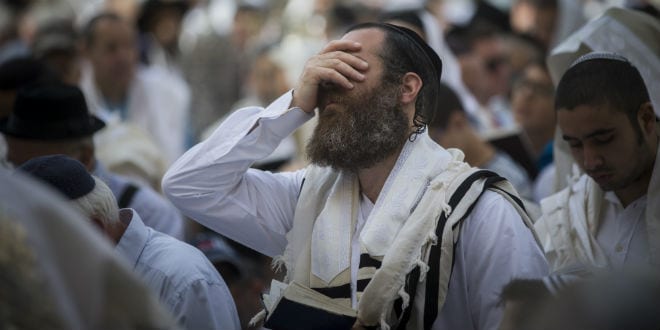When black pastor Wayne T. Jackson draped a Jewish prayer shawl on Donald Trump two weeks ago in his Detroit church, it created a political storm, as the controversial candidate challenged his critics by posing for a multi-cultural snapshot. Though clearly a tactic intended to attract black and Christian voters, the gesture was seen by some Jews as an egregious case of cultural appropriation.
As the emerging phenomenon of Christians adopting Jewish rituals grows, Jews are beginning to ask if this sign of a newfound closeness is a positive thing, or if it is even allowed by Jewish law.
Though the garb was new to Trump, the pastor and many other Christian worshippers in his Great Faith Ministries have adopted it, as well as a number of Jewish customs, including Saturday Sabbath and the Jewish holy days.
“This was not anything that is unusual for us,” Bishop Wayne Jackson told The Times of Israel. “You go to my church, and you’ll see a lot of people with them on. I have several of them. I have a Jewish lawyer who gave me his personal tallit. I have about five or ten of them for myself.”

He explained his attachment to this particular mitzvah (Torah commandment). “Of course, the founder of faith is our messiah Jesus, and he wore a tallit,” Jackson said. “So this is a common thing in the gentile church or the Christian faith.”
Haaretz, a left-wing news site which usually does not side with Orthodox Judaism, took up the religious banner in order to criticize the Trump tallit, saying “it looked like the world’s weirdest Bar Mitzvah”.
“This is a totally absurd distortion of the meaning of an important Jewish ritual object, which is used by Jews for prayer all over the world,” said Rabbi Ron Kronish, founder and senior advisor for the Interreligious Coordinating Council in Israel, Haaretz reported.
American-born Rabbi Seth Farber said Trump’s donning of the prayer shawl was a pure political move which cheapened the act. “When any religion’s holy objects are mobilized for political purposes – that makes me very uncomfortable,” he told Haaretz.
Rabbi Danya Ruttenberg, named by Newsweek and The Daily Beast as one of ten “rabbis to watch,” and one of the top 50 most influential women rabbis, tweeted that Trump’s wearing a tallit was “the worst kind of appropriation”.
You guys, a Jewish prayer shawl–a tallit–is a ritual garment. Meant to be worn only by Jews. This is the worst kind of appropriation.
— Rav Danya Ruttenberg (@TheRaDR) September 4, 2016
More and more Jewish customs are being adopted by many Christians, and it clearly makes some Jews uncomfortable. But for those who welcome this reconciliation, the question becomes whether or not it is permitted according to strict Jewish law. Is this a sanctification of God’s name or is it a desecration?
Rabbi Daniel Kohn, an Israel-based ultra-Orthodox rabbi who is an expert in halachic (Jewish law) questions, cited the Rambam, the foremost halachic authority of the 12th century, whose rulings are still used as the basis for much of Jewish law. The Ramban’s teaching on this subject may surprise many Orthodox Jews.
“According to the Rambam, it is certainly permissible for non-Jews to perform this mitzvah, as well as any other mitzvah Jews are required to perform today,” Rabbi Kohn told Breaking Israel News. “He writes that it is commendable, and even divinely rewarded.”
Indeed, there are many Christians who have adopted the mitzvah of tzitzit, the fringes that are the essential aspect of the tallit, as a meaningful part of their prayer and daily lives.
Ken Rank, founder of United 2 Restore, an organization aimed at “bringing Judah (the Jews) and Ephraim (found mainly within Christianity) together”, finds the tallit adds a new dimension to his prayer.
“It is like a tent you can hide and be alone with God under it when you are praying,” Rank said. He admitted that there were some aspects of his approach to the mitzvah that did not adhere to Jewish law.
Like many Christians who wear the daily fringes, he wears them attached to his belt, tucked away, out of sight, because of the impression it would make on more mainstream Christians. “We are still feeling our way through this, learning and growing as we go,” he explained.

A Christian woman from North Florida who wears the fringes is shy about her observance. “Really, we are just learning like children, all of us. It is popular on Christian television to see preachers wearing one, and explaining what the fringes mean, how the Jews have a commandment to wear the fringes,” she told Breaking Israel News.
Though she has a collection of prayer shawls, she doesn’t wear them in public because she is fearful of negative reactions from Jews. “I have come to expect judgment and negativity, or awkwardness from Jews. It kind of outweighs the positive and it’s hard for me to appreciate the goodness sometimes,” she said.
David Nekrutman, Executive Director of the Center for Jewish-Christian Understanding and Cooperation, told Breaking Israel News that Jews should be understanding and even welcoming regarding the practice.
“Jews should see Christians using certain Jewish religious objects as way for them to be in touch with the roots of their faith and reminding them be more Biblically centered in their walk with the God of Abraham, Isaac and Jacob,” he said.




